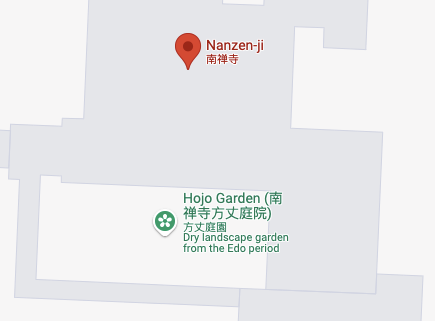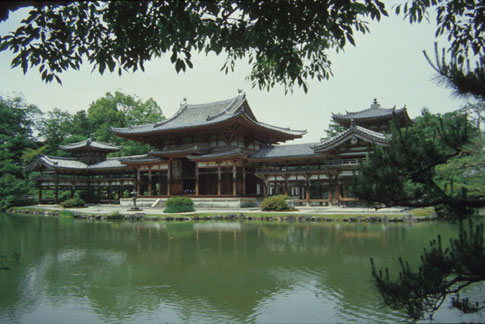
One of the most powerful Zen monasteries in Japan, Nanzen-ji was counted among the Gozan, the five principal Zen establishments in Kyoto, and in 1381 was declared number one. The abbot's residence in the main complex contains not only important paintings of the Kano School, but also the garden featured on this page (two of Nanzen-ji's subtemples--Konchin-in and Tenju an--also possess important gardens pictured on other pages of this site). Choose a view point from the map or click Tour the Garden for more views of this garden.
One of the most powerful Zen monasteries in Japan, Nanzen-ji was counted among the Gozan, the five principal Zen establishments in Kyoto, and in 1381 was declared number one. It was entirely destroyed during the Onin Wars of the fifteenth century, and most of the buildings now on the site are of the Momoyama Period or later. The abbot's residence in the main complex contains not only important paintings of the Kano School, but also the garden featured on this page (two of Nanzen-ji's subtemples--Konchin-in and Tenju-an--also possess important gardens pictured on other pages of this site).
The garden in its current form probably dates from the 17th Century. It is essentially a rectangle of crushed rock, walled on the south and east, and viewed from two verandas of the abbot's residence, the Seiryoden Hall. Along the eastern wall is a moss-covered area containing large stones, trees and shrubs, these elements arranged in a descending order of size from north to south. Because Nanzen-ji is located just below the steep western slope of Higashiyama, the view of the garden from the eastern veranda includes the borrowed scenery of that hillside. The shape of the rocks has led some to assume that they represent "leaping tigers" or "tigers crossing a river," an interpretation probably inspired by the Kano School painting of tigers decorating the sliding doors of the hall. Like the interpretations of Ryoan-ji's rocks, however, the association must be considered wholly conjectural.
The design of this karesansui garden is attributed to Kobori Enshu, but as is the case with many of the gardens said to have been designed by Enshu, there is no documentation of his involvement.

